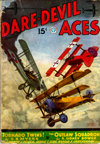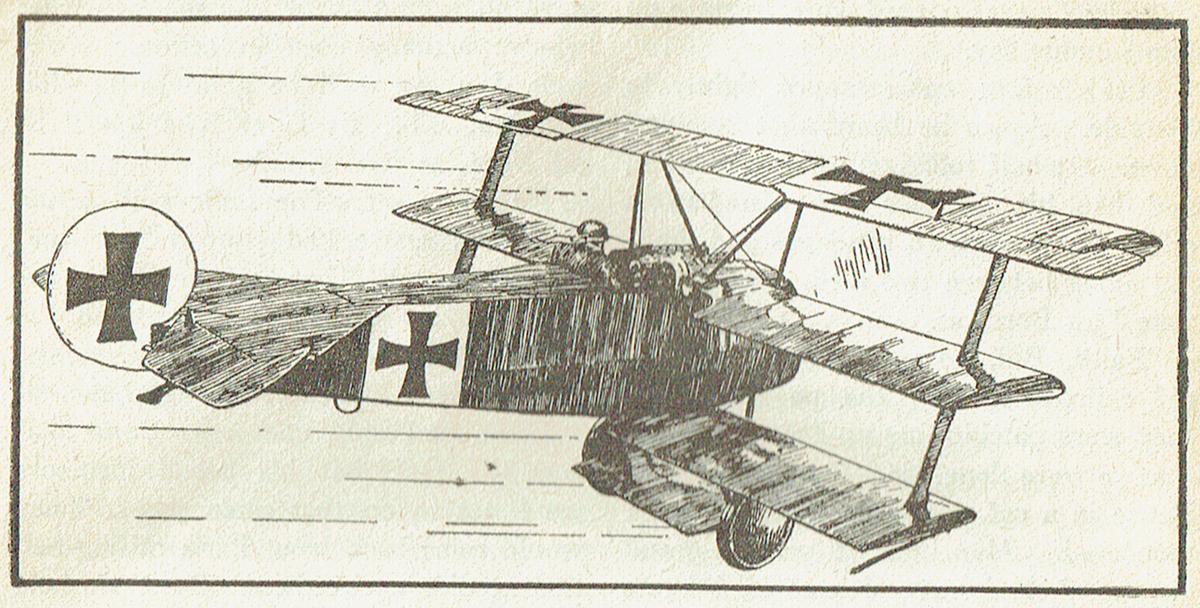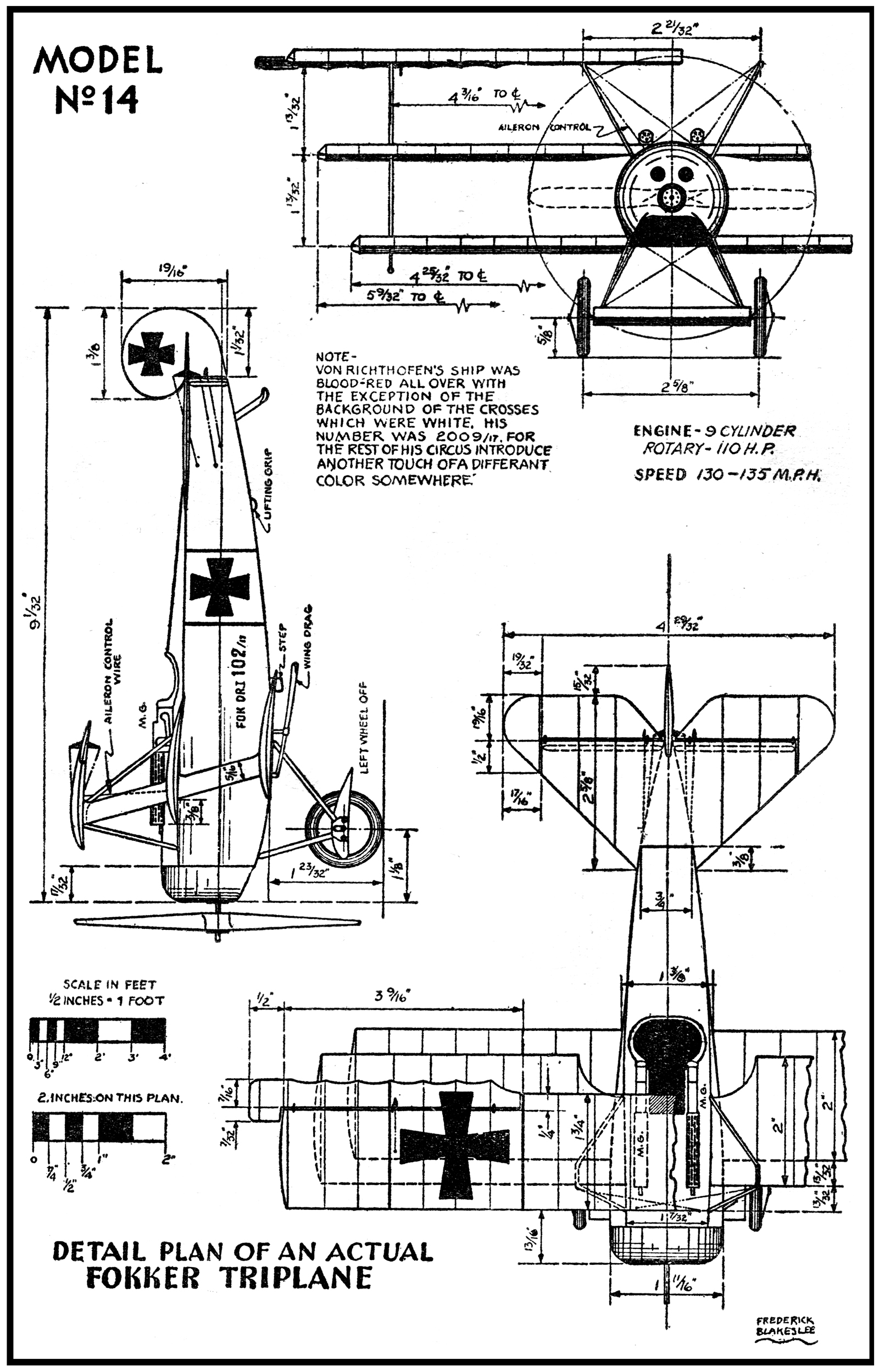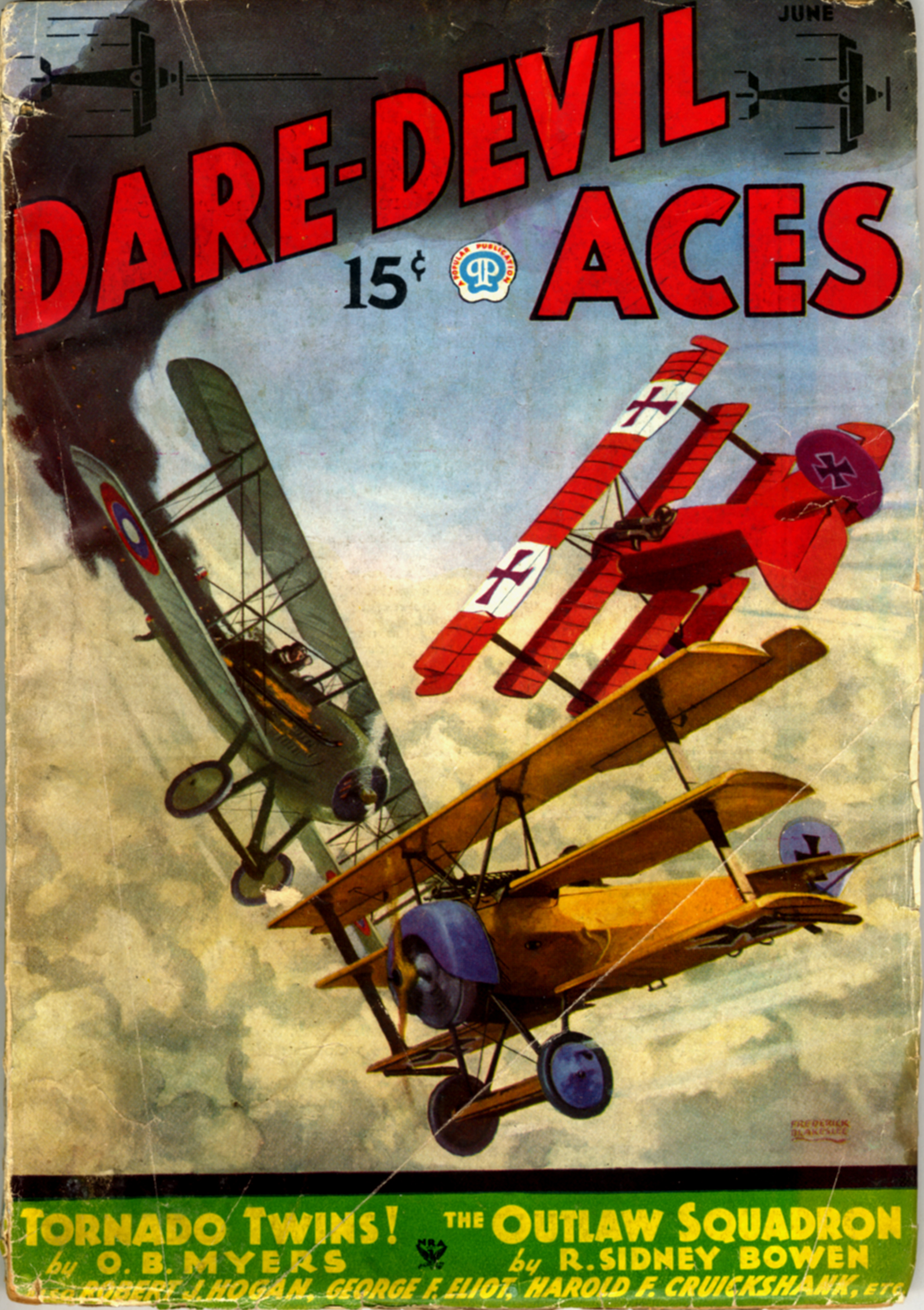“The Fokker Triplane” By Robert H. Rankin
Frederick Blakeslee painted all the covers for the entire run of Dare-Devil Aces. And each of those covers had a story behind it. This time, we have more of the approach he used for the covers he painted for Battle Aces—telling us about the ship on cover. But, instead of Mr Blakeslee telling us about the ship on the cover, we have Mr. Robert H. Rankin, formerly a draughtsman for the Fokker Aircraft Corp telling the story of the most recognized plane of the era—the Fokker Triplane—featured on the cover of the June 1935 cover of Dare-Devil Aces. . . .
 AFTER one look at the cover this month you would probably think that the American and German pilot were doomed. However, both escaped, the American with minor burns and the German with a bad fright.
AFTER one look at the cover this month you would probably think that the American and German pilot were doomed. However, both escaped, the American with minor burns and the German with a bad fright.
As a matter of fact, the fire on the Spad was not quite as bad as we have shown; just bad enough to make the pilot think that he was due for an awful death. He decided to crash one of the Fokker tripes, bringing it down with him. But the pilot of the Fokker got ont of the way just in the nick of time.
The American discovered in that dive that if he side-slipped the blast of wind would keep the fire away from the cockpit. He managed to reach the ground by side-slipping. As he later said—”Given my choice of crashing or being burned to a cinder, I’ll crash every time.” And crash he did.
Now let’s hear from an expert the inside dope on the Fokker triplane.
The Fokker Triplane
By ROBERT H. RANKIN
Formerly Draftsman, Fokker Aircraft Corporation
DURING the early part of the year 1916 the German High Command realized that the war had developed into a bitter struggle which would be prolonged much longer than had at first been expected.
With this fact in mind, Germany at once redoubled her efforts to gain undisputed supremacy of the skies and Anthony Fokker was asked to design and produce a new combat ship which would enable her to gain the upper hand. Fokker set to work at once and in the early fall of 1916 this plane was placed in the hands of the fighting pilots. It was the Fokker D.R.-I, or as it was perhaps better known, the Fokker triplane.
At first the performance of the triplane was not viewed seriously by the Allies. But within a short time they learned to have a high regard for the new Fokker pursuit. Although this unique ship was slower than the Nieuports, Sopwiths and Spads, its ability to climb and maneuver gave it a decided advantage over any ship then in use and the series of impressive victories for which it was responsible gave the entire world notice that it was a most important factor in aerial warfare.
In general outline the Fokker D.R.-I was of the orthodox triplane type. However, unlike the Sopwith triplane the span of the wings were unequal.
The span for the top wing was 23 feet, 7 inches, the span for the middle wing was 20 feet, 6 inches, while the span of the bottom wing was 18 feet, 9 inches. The chord was the same for all three wings. The top wing alone was provided with ailerons, and these were of the balanced type.

One of the outstanding features of the Fokker was the wing spar construction. The main point of interest is that the twin spars were built up of two box section tapering spars, these being joined by transverse plywood. The front and rear shear strength of this built-up member was supplied by one right and one left plywood bulkhead in each wing.
Structurally the main wing frame could be regarded as consisting of three pairs of cantilevers tied by pseudo-struts near the wing-tips. The function of this structure was to distribute the load evenly from wing to wing.
The use of the triplane design gave the advantage of a larger ratio of lifting power. Of course, there was some increase in head resistance caused by the use of the extra set of inter-plane struts. But by bracing the wings internally, Fokker eliminated all brace wires, thus reducing the total head resistance to some extent.
It is interesting to note in connection with this that Fokker was the first designer to completely do away with inter-plane bracing.

“Model No.14 – Fokker Triplane” by Frederick Blakeslee (January 1934, Battle Birds)
The fuselage of the triplane was built up of welded tubular steel and was covered with linen fabric. It was rather well streamlined, and like most of the Fokker war-time designs it compared closely to modern aeronautical practice.
The empennage or tail of the ship was a fabric covered steel tubing framework. There was no vertical fin, there being only the characteristic Fokker rudder. The tail plane or stabilizer was comparatively large and was fitted with the usual type elevators.
The landing gear axle was inclosed by a wing, a feature which was incorporated on all of the later Fokker fighting models. This wing was two pieces and these were attached to a central casting which housed the shock absorbing agents and the axle. The covering for this wing was plywood.
The triplane or D.R.-I was equipped with a 110 h.p. 9 cylinder Oberursel rotary motor. This motor was mounted on a plate which was stamped from sheet steel. The plate was attached, of course, to the front ends of the fuselage longerons.
For armament the plane was fitted with twin Spandau machine guns, these being mounted on the top side of the fuselage directly in front of the cockpit. Directly behind the engine was the synchronizing gear for the guns, and behind this gear was located the fuel tank. This tank was of a rather small capacity and as a result the flight range of the machine was greatly limited.
The triplane answered very well to the controls and as far as climb and general maneuverability are concerned it was equaled by but very few of the later war time designs.
German pilots have told the writer that they were greatly impressed with the ship and if the speed of the plane could have been increased they would have preferred it to any other plane, with the possible exception of the D-VTI. Certainly it was the choice of many of the German pilots.
The great von Richthofen, who could select any ship he desired, favored it above them all; and his series of victories indicate the famous flyer made no mistake in his choice of a pursuit.

“The Fokker Triplane” by Frederick Blakeslee (June 1935, Dare-Devil Aces)
Mr. Blakeslee covered the Fokker Triplane himself with the story of the great von Richthofen last flight for the cover of the March 1932 number of Battle Aces.




